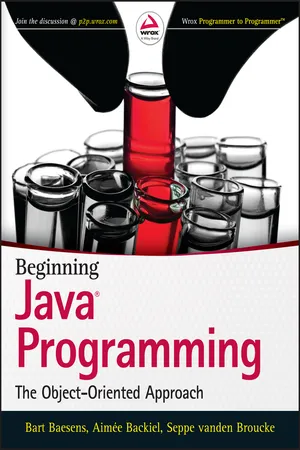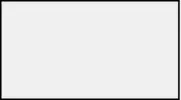
Beginning Java Programming
The Object-Oriented Approach
- English
- ePUB (mobile friendly)
- Available on iOS & Android
Beginning Java Programming
The Object-Oriented Approach
About this book
A comprehensive Java guide, with samples, exercises, case studies, and step-by-step instruction
Beginning Java Programming: The Object Oriented Approach is a straightforward resource for getting started with one of the world's most enduringly popular programming languages. Based on classes taught by the authors, the book starts with the basics and gradually builds into more advanced concepts. The approach utilizes an integrated development environment that allows readers to immediately apply what they learn, and includes step-by-step instruction with plenty of sample programs. Each chapter contains exercises based on real-world business and educational scenarios, and the final chapter uses case studies to combine several concepts and put readers' new skills to the test.
Beginning Java Programming: The Object Oriented Approach provides both the information and the tools beginners need to develop Java skills, from the general concepts of object-oriented programming. Learn to:
- Understand the Java language and object-oriented concept implementation
- Use Java to access and manipulate external data
- Make applications accessible to users with GUIs
- Streamline workflow with object-oriented patterns
The book is geared for those who want to use Java in an applied environment while learning at the same time. Useful as either a course text or a stand-alone self-study program, Beginning Java Programming is a thorough, comprehensive guide.
Frequently asked questions
- Essential is ideal for learners and professionals who enjoy exploring a wide range of subjects. Access the Essential Library with 800,000+ trusted titles and best-sellers across business, personal growth, and the humanities. Includes unlimited reading time and Standard Read Aloud voice.
- Complete: Perfect for advanced learners and researchers needing full, unrestricted access. Unlock 1.4M+ books across hundreds of subjects, including academic and specialized titles. The Complete Plan also includes advanced features like Premium Read Aloud and Research Assistant.
Please note we cannot support devices running on iOS 13 and Android 7 or earlier. Learn more about using the app.
Information
1
A General Introduction to Programming
- The key steps in a programming process
- The different types of programming errors
- The key principles of software testing
- The different types of software maintenance
- The key principles of structured programming
www.wrox.com/go/beginningjavaprogramming on the Download Code tab. The code is in the Chapter 1 download and individually named according to the names throughout the chapter.THE PROGRAMMING PROCESS

- Requirements gathering and analysis
- Program design
- Program coding
- Translation to machine language
- Testing and debugging
- Deployment
- Maintenance

| FLOWCHART SYMBOL | MEANING |
 | A terminator shows the start and stopping points of the program. |
 | An arrow shows the direction of the process flow. |
 | A rectangle represents a process step or activity. |
 | A diamond indicates a decision point in the process. |
 | This symbol represents a document or report. |
 | This rhombus represents data used as inputs/outputs to/from a process. |
 | This cylinder represen... |
Table of contents
- COVER
- INTRODUCTION
- 1 A GENERAL INTRODUCTION TO PROGRAMMING
- 2 GETTING TO KNOW JAVA
- 3 SETTING UP YOUR DEVELOPMENT ENVIRONMENT
- 4 MOVING TOWARD OBJECT-ORIENTED PROGRAMMING
- 5 CONTROLLING THE FLOW OF YOUR PROGRAM
- 6 HANDLING EXCEPTIONS AND DEBUGGING
- 7 DELVING FURTHER INTO OBJECT-ORIENTED CONCEPTS
- 8 HANDLING INPUT AND OUTPUT
- 9 WORKING WITH DATABASES IN JAVA
- 10 ACCESSING WEB SOURCES
- 11 DESIGNING GRAPHICAL INTERFACES
- 12 USING OBJECT-ORIENTED PATTERNS
- TITLE PAGE
- COPYRIGHT
- DEDICATION
- ABOUT THE AUTHORS
- CREDITS
- ACKNOWLEDGMENTS
- ADVERT
- EULA